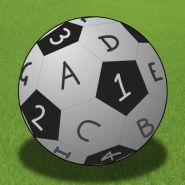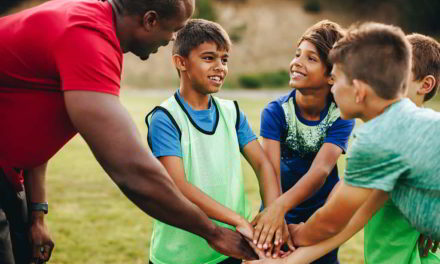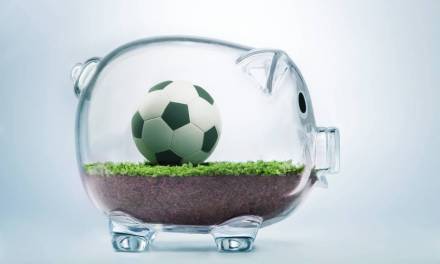Consciously or unconsciously, everyone who takes part in sport at whatever level will use both literacy and numeracy skills.
From PE lessons of all Key Stages, to grassroots clubs of different sports, all the way to elite level athletes and their coaches, literacy and numeracy skills are utilised to a greater or lesser degree.
This gives teachers the opportunity to incorporate the development of these skills into their physical education lessons.
Literacy in the curriculum is comprised of four aspects:
- Listening
- Writing
- Reading
- Speaking
Two of these components are widely known as important in sport: listening and speaking. They are both crucial to teamwork, communication and therefore success in a sporting context. Reading and writing to those who are unaware of the importance of literacy in sport may be seen as not involved in Physical Education and sport.
However, all four of those components can be covered in a team talk alone and for the athletes to be able to understand and correctly interpret the information been given can be the difference between success and failure.
Sport is forever being broken down into statistics and figures, allowing people the opportunity to work on their numeracy skills.
Different sports will allow the individuals involved to calculate differently and to test the individuals, examples of these are scoring, success rates, distance, time, angles etc. For sports such as cricket where the numbers are into the hundreds, this requires the players to calculate the score of the match in more detail than football, where the score rarely goes over 6 goals.
Both numeracy and literacy can be used in Physical Education lessons with the student’s knowledge, below we will look at examples of how to implement these ideas into lesson plans that can be used for PE lessons from Key Stage 1 up to Key Stage 4.
As previously stated, all sports are broken down into statistics and figures; this can also be done in PE lessons. The analysis and feedback given to all sportspeople, regardless of ability, is another way in which literacy is used in PE and sport in general.
The teacher will need to divide the pupils into teams however making sure that there are an odd numbers of teams, so this will mean that one team will not be playing at all times. The instruction to this team is to pick a student who is playing and to watch their performance, keeping track of shoots, passes attempted, passes completed, tackles made etc. these figures can then be analysed by the class as a whole afterwards with the teacher allowing the students to interpret and work out the percentages for themselves.
This is an obvious way of allowing numeracy to play a part in a PE lesson. Another way, taking athletics as an example, would be to allow the students to record the times achieved or the distances covered in the jumping or throwing events. These can be compared to each other’s scores and the differences calculated to test the numeracy skills of the students.
Literacy can also be covered in a subtle manner or a more obvious one depending on the group involved; the teacher can use their evaluation skills to have an understanding of what will work with each individual group.
A simple but effective method is simply to ask the students about the positions involved in that given sport (providing the sport has positions), this can be done after the teacher has provided this information and therefore test the students’ listening and writing skills. The writing side of this task can be done in a textbook or on a whiteboard, the teacher should try to test more than one aspect of literacy at any one time.
In my experience, many students do not initially understand the importance of literacy and numeracy for PE. However, after explaining and pointing out why literacy and numeracy are being covered in PE, they generally show a good understanding of its significance.
I find that the importance is consistency; doing small sections in each lesson to both reiterate work from previous lessons and to develop knowledge and understanding over a series of sessions. This can be as small as communicating effectively with the students to making them write down and compare their athletics scores, as this combines both numeracy and literacy in one section of the lesson.
Sport, literacy and numeracy are interlinked and are as important as each other for children to succeed in a given activity. As we have discussed, both numeracy and literacy play a huge, and potentially underrated, aspect in sport at all levels and the sooner the coaches, teachers and parents are able to utilise these skills, the athlete will only improve their performance.
Overall, literacy and numeracy are subjects which PE teachers should be encouraging the development of for students of all ages. Not only do these skills have benefits in a sporting context, but it will help pupils develop in the core subjects in the National Curriculum. As discussed above, these two aspects can be implemented subtly or in a more explicitly and from my experience, both lesson plans work if worked upon consistently.










